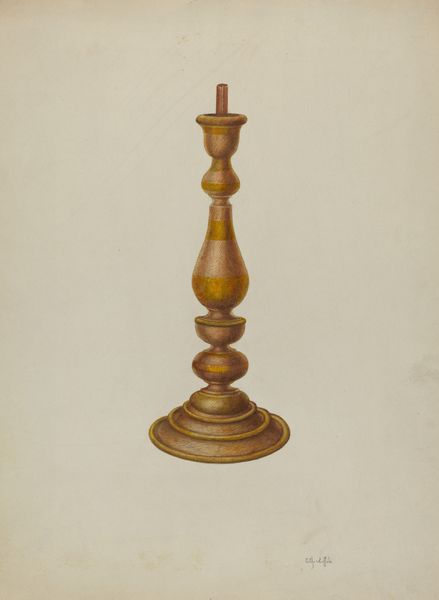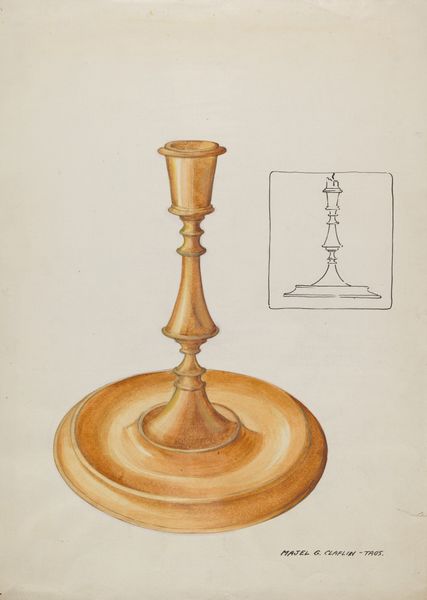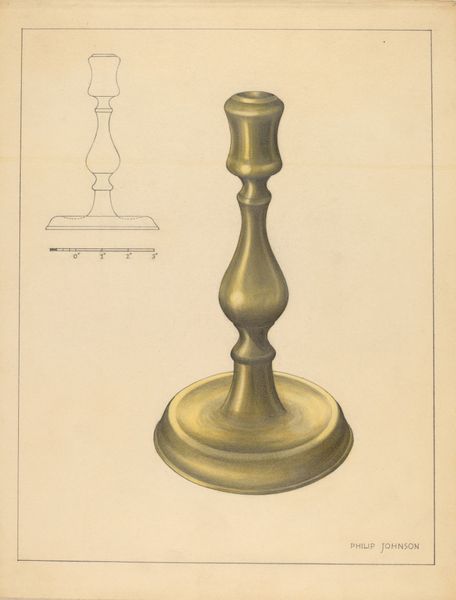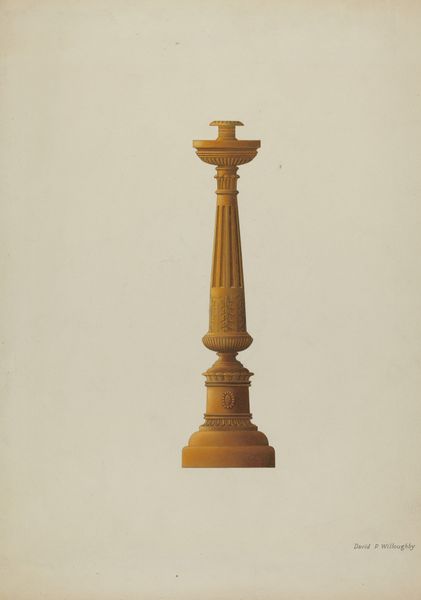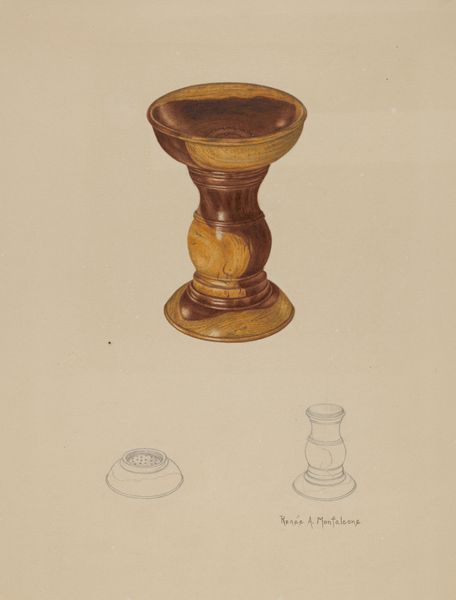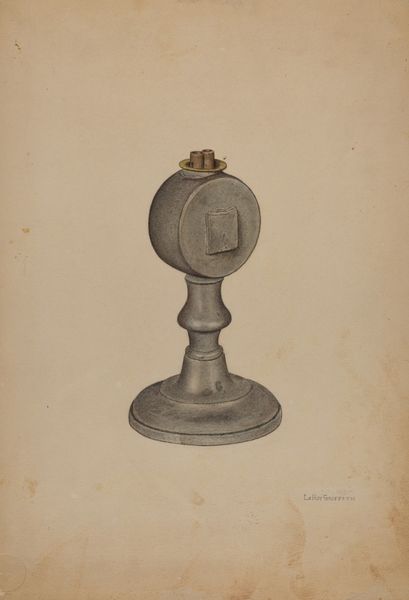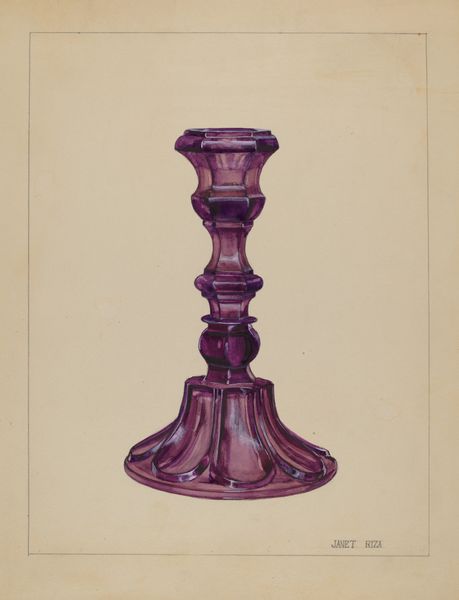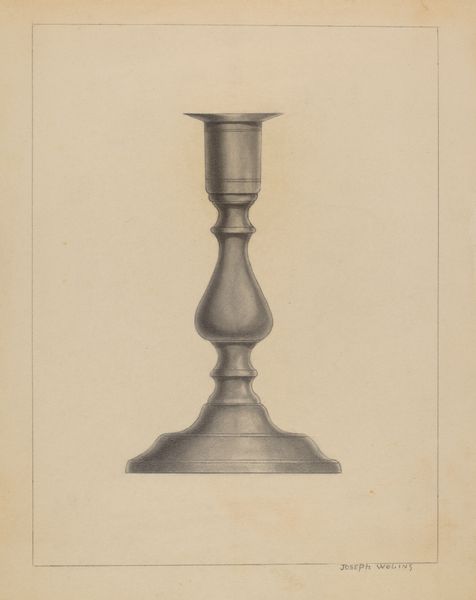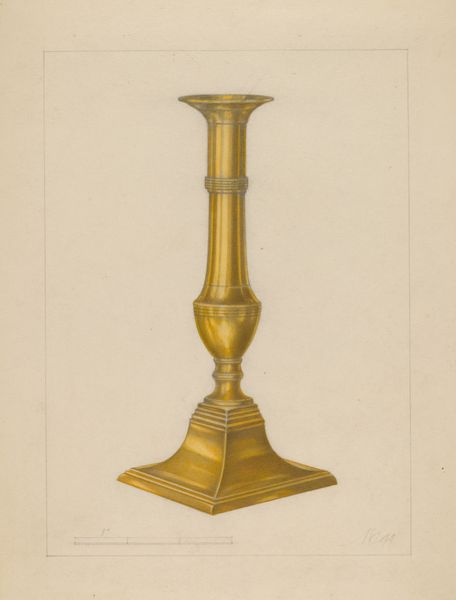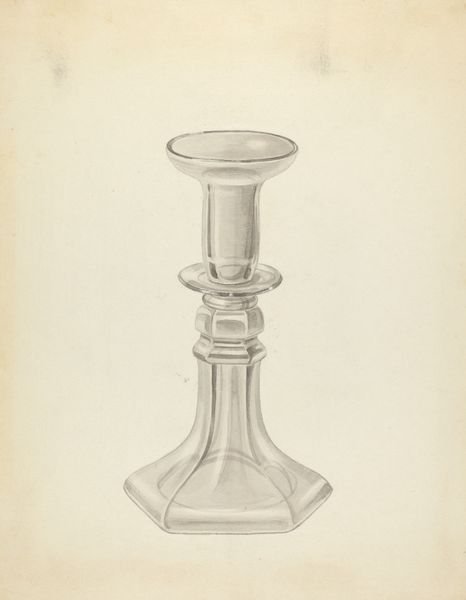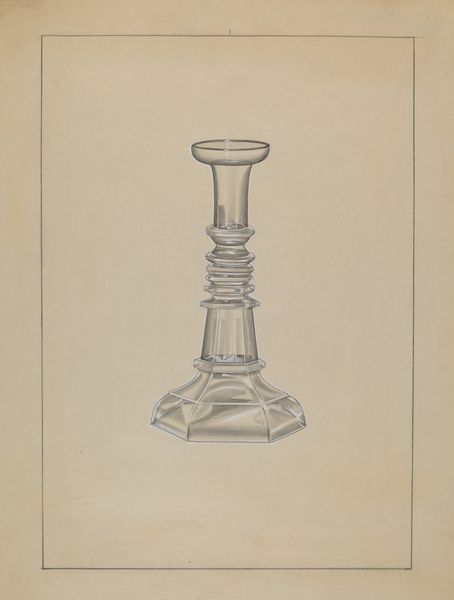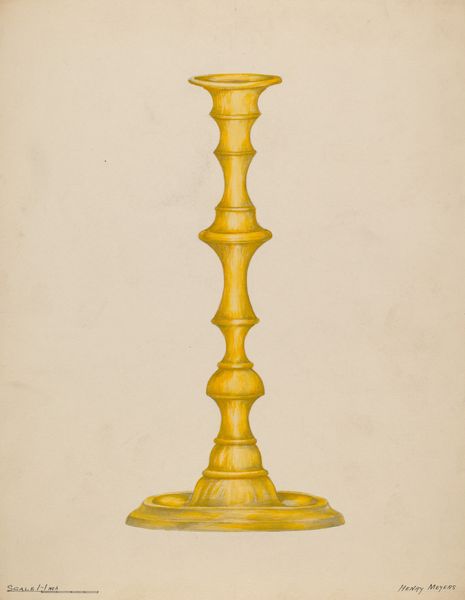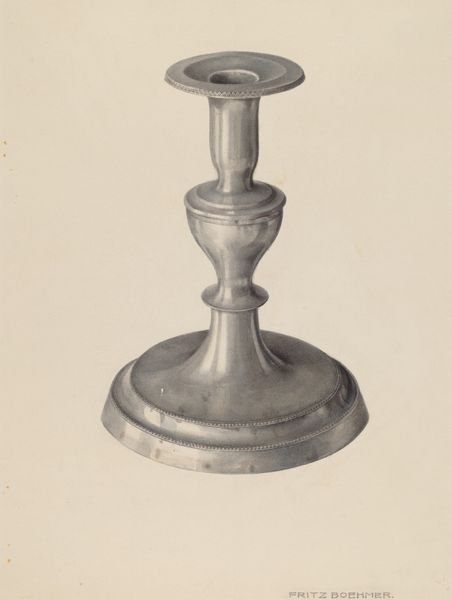
drawing, pencil
#
drawing
#
charcoal drawing
#
pencil drawing
#
pencil
#
watercolour illustration
#
academic-art
#
watercolor
#
realism
Dimensions: overall: 35.8 x 26.8 cm (14 1/8 x 10 9/16 in.) Original IAD Object: 7" high; base: 2 7/8" square; 3/4" high
Copyright: National Gallery of Art: CC0 1.0
Curator: This drawing is titled "Candlestick," created around 1938 by Leslie Macklem, using pencil and watercolour. What's your initial reaction to it? Editor: My first thought is the subdued palette; it lends the drawing a certain quietness, almost a hushed reverence for the everyday object. Curator: Indeed. Consider the period; it's the late 1930s, the shadow of economic depression lingers, and anxieties about war are rising. An artwork focusing on domesticity—a humble candlestick rendered with academic-art precision—suggests an embrace of simplicity, stability, perhaps even an act of resistance against looming uncertainties. What do you think about this candlestick having that intent? Editor: That's compelling. Focusing on the home is an intriguing social narrative given the pervasive gender norms. Did the artist engage with issues of social reform? Or consider this a social commentary? Curator: Leslie Macklem herself remains somewhat enigmatic. There isn't an abundance of scholarship examining the gendered politics of realism at the time. In what ways do institutional frameworks shape such depictions, promoting, or obscuring, certain perspectives of gendered identity? Editor: Absolutely, who decides which works merit the spotlight directly influences art history. But, speaking directly to the drawing, the interplay of light and shadow makes the metallic sheen convincingly. It’s skillful rendering of the object itself. Curator: I see its meticulous attention to detail through that social context. The smooth, rounded shapes seem to resist the harsh angularity so favored during this period of modernism. I am intrigued. Editor: Exactly, this watercolor moves against modernism and into its own time through the material representation. A great use of materials. Curator: Analyzing this work provides a quiet testament to the resilience found in small moments during times of disruption. Editor: I agree; and studying those quiet testaments can, as an art historian, expand our perspectives on our assumptions.
Comments
No comments
Be the first to comment and join the conversation on the ultimate creative platform.
